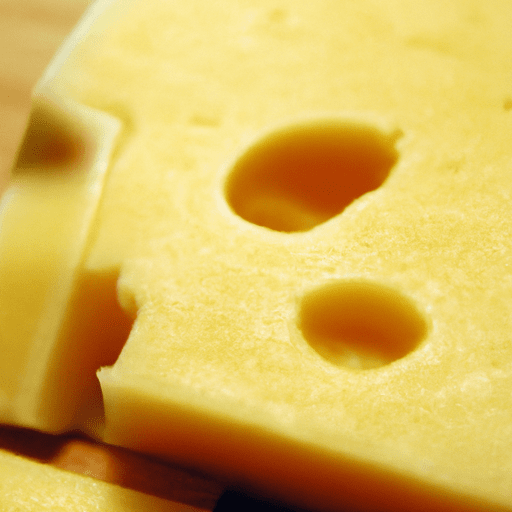Exploring the Creamy World of Process American Cheese
When it comes to versatile and creamy cheeses, few options can rival the ever-popular Process American Cheese. Known for its smooth texture, mild flavor, and ability to melt to perfection, it has earned a special place in the hearts and kitchens of many home cooks and professional chefs alike. In this blog post, we will delve into the fascinating world of Process American Cheese, exploring its taste, common uses in cooking, nutritional value, and uncovering some interesting history and facts along the way.
Taste and Texture
Process American Cheese is renowned for its velvety texture and mild flavor profile. It carries a distinct creaminess that makes it exceptionally enjoyable to eat. Unlike traditional American cheese, which is made from cheddar and other natural cheese varieties, Process American Cheese is a processed cheese product. This processing gives it a smoother texture and a consistent taste that remains relatively unchanged across different brands.
Cooking with Process American Cheese
One of the irresistible qualities of Process American Cheese is its exceptional melting ability. This makes it a go-to ingredient for a variety of dishes, particularly those that call for a gooey, cheesy consistency. From classic comfort foods like grilled cheese sandwiches and cheeseburgers to creamy macaroni and cheese or decadent cheese dips, Process American Cheese can elevate your cooking with its delightful meltability. It also pairs well with other ingredients, such as jalapenos, bacon, and tomatoes, adding a luscious touch to dishes like stuffed burgers and nachos.
Nutritional Value
While Process American Cheese is undeniably delicious, it’s important to consider its nutritional value. Like many processed cheese products, it is often higher in calories, sodium, and saturated fat compared to natural cheeses. However, it does offer some nutritional benefits. Process American Cheese is a good source of calcium, providing a significant amount of this essential mineral for maintaining strong bones and teeth. It also contains protein, vitamin A, and phosphorus, though in relatively smaller amounts.
History and Fun Facts
Process American Cheese has a rich and intriguing history. It was first developed in the early 20th century as a cheese that could resist spoilage. With the addition of emulsifiers and stabilizers, it became more shelf-stable and less prone to bacterial growth. This innovation made it highly sought after, especially during wartime when food preservation was crucial.
Interestingly, Process American Cheese achieved immense popularity during the Great Depression. Its affordability and versatility earned it a spot in households across the United States, offering food security and flavor during challenging times. Over the years, it has become a staple in American cuisine, loved for its convenience and comforting qualities.
In the world of cheese, Process American Cheese stands apart with its smooth, melty consistency and mild taste. Whether you’re making a mouthwatering grilled cheese sandwich, a creamy macaroni and cheese, or a cheesy dip for your next gathering, Process American Cheese is a reliable ingredient that brings comfort and flavor to your favorite dishes. Its fascinating history and ability to spark nostalgia make it an enduring favorite among many. So let’s embrace the creamy wonders of Process American Cheese and savor its satisfying presence in our culinary adventures!
Check out our other cheese-related blog posts here
Process American Cheese
Origin: Process American cheese, also known as American cheese singles or individually wrapped slices, is a type of processed cheese that originated in the United States. It was developed in the early 20th century as a convenient and shelf-stable alternative to traditional cheese.
Common Uses: Process American cheese is commonly used in households and commercial establishments as a melting cheese. It is a popular choice for making grilled cheese sandwiches, burgers, and cheese sauces due to its smooth texture and excellent meltability. It is also used in processed food products such as macaroni and cheese, canned soups, and cheeseburgers.
Nutritional Benefits: Process American cheese has some nutritional benefits. It is a good source of protein, calcium, and phosphorus. It also provides vitamins A and B12. However, it is important to note that Process American cheese is often high in sodium and fat content, so moderation is advised when consuming it as part of a balanced diet.
Unique Properties: One of the unique properties of Process American cheese is its ability to melt smoothly and evenly. This is due to its specific formulation and the addition of emulsifying salts, such as sodium citrate or sodium phosphate. These salts help the cheese to maintain its emulsion and prevent it from separating when heated.
Historical Significance: Process American cheese played a significant role in the evolution of cheese-making and consumption in the United States. Its invention allowed for the mass production, distribution, and storage of cheese, making it more accessible to a wider population. While it has faced criticism for being less natural than traditional cheese, it remains a staple in many American households and popular fast-food chains.




Use the share button below if you liked it.
It makes me smile, when I see it.